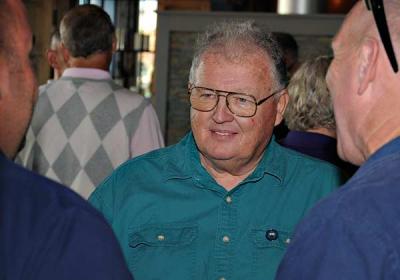Major Improvements Ahead
Major Improvements Ahead
The Springs School District, which is facing the possibility that its facilities committee may soon recommend a bond referendum for a capital improvement project of considerable size, has issued a request for proposals from architectural or engineering firms.
In a legal notice dated June 25, the district announced it is seeking “services in connection with various capital improvements,” such as classroom additions and renovations, upgrades mandated by the federal Americans With Disabilities Act, upgrades to heating, ventilation, and air-conditioning systems, fire alarm system replacement, roof, ceiling, and floor replacement, and more.
The facilities committee, which consists of community members, parents, and school administrators and teachers, has been asked to make recommendations about how to fix what many agree are overcrowded conditions at the school and aging infrastructure. At the committee’s June 17 meeting, some on the committee agreed that some sort of expansion or renovation, or the addition of portable classrooms, was necessary.
Since early 2014, the district has been paying BBS Architects, a firm based in Patchogue, for an evaluation of the problems and for recommendations for how to handle them. From April of that year to this April, Springs paid BBS Architects about $26,500. The company has been working with the facilities committee since May, however, without charge.
“We do a lot of educational planning of this nature, and we often are working in committees like this at no fee. . . . It is something that the firm is expert in, and it is a community effort,” Roger Smith, one of the principal architects at BBS, said.
Tom Primiano, the Springs School’s district treasurer and business administrator, said Springs had budgeted $3,000 for architectural services during the 2013-14 school year, but, in addition to BBS, it had spent $5,060 for work by Chaleff and Rogers of Water Mill for the renovation of the front entrance of the school. The school board approved a new contract for Chaleff and Rogers on June 8 as the result of a separate request for proposals.
“It was done so they have someone available to help them with things thatrise, minor issues that require some technical assistance, for the coming year,” Paul Rogers, one of the principal architects with Chaleff and Rogers, said.
“It’s totally separate from a capital project like building additions or adding parking. There might be some overlap, but it’s probable that there wouldn’t be,” he said.
Mr. Primiano explained that the school board had approved transfers into its capital fund amounting to $300,000 over the last two school years, “as a place for preliminary costs relating to any potential capital projects.”
“That’s not just for an architect. That’s for anything capital project-related that can come up,” he said.
According to the Eastern Suffolk Board of Cooperative Educational Services, professional services, such as architectural planning, do not require school districts to issue requests for proposals each time they require those services. However, John J. Finello, the Springs School superintendent, said Wednesday that the district issued this request because it anticipates “that this project may be far more extensive based upon the Board of Education’s final decisions.”
Mr. Finello spoke highly of BBS Architects, having previously worked with Mr. Smith elsewhere.“His reputation, his credentials, are excellent,” Mr. Finello said. “The work that he has done with our board has been very beneficial to the district.”
Mr. Rogers said yesterday that his firm was contemplating a possible reply to the latest request for proposals. Mr. Smith said Tuesday that his firm had submitted a proposal.
“We would love to be able to continue to work in Springs,” Mr. Smith said. “I’m trying to make the process as open and as informed as possible. I think the community can benefit from that.”







